Koning Eizenberg Architecture co-founder and Australian Institute of Architects 2019 Gold Medal winner Julie Eizenberg joined Justine Clark to reflect on inspirational teachers, the creative potential of being an outsider, and the critical role of architecture as a social medium.

Early years
In 1972, when I started, there were a number of women faculty teaching in the Architecture School at the University of Melbourne. That was quite rare for an architecture school, as I have learned since. There was Blanche Merz, there was Beth Coldicutt and Helen Tippett. Blanche taught lighting and math, Beth Coldicutt taught structures, Rita Avdiev tutored construction and Edna Sharp tutored building science. These were not lightweights. There were also women teaching design studio, like Deborah White. So, I never thought there was a problem about women achieving in the field – but still, only 10% of the class enrolled in 1972 were women.
I had a particular admiration for Blanche. She just did not care what the conventional order was. She had this hippy way of dressing, bleached blonde curly hair and long robes, and yet she worked with serious content. She wasn’t just trimming roses. She was doing real research, real work and dressed to please herself! In retrospect the takeaway was that there were no limits and certainly you did not need to be one of the guys to be taken seriously.
She helped me a lot as I was sorting out how to gain independence from an overly protective family that didn’t really trust me. They were suspicious of the hours, the company and the culture. And I was a girl. The situation became increasingly difficult as I tried to reconcile the two worlds. Blanche took it upon herself to visit my mother (dressed conservatively) to explain the context of architectural education and assure her that I was in no danger. That was a pretty extraordinary thing to do. I never forgot it. Mum never talked about it.
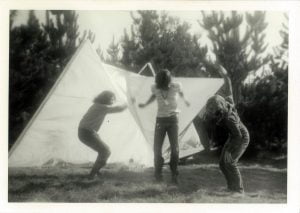
1970s – Early projects at the University of Melbourne.

Moving to Los Angeles
Hank and I didn’t do the year abroad after third year, which was the normal practice, and we were eager to travel by the end of the five years. We were married in 1979, a year or so after we finished the program, and took off the next day to go to graduate school in the US. We ended up in the US because Europe was in an economic recession and in graduate school because getting into university seemed easier than getting a work permit. We were accepted at UCLA, which had a two-year program.
If we could have gone home after the first year without losing face we would have. We really wanted out. LA was big, hostile and completely illegible coming from the life we knew in urban Melbourne. Where were the people? LA was sprawling, and largely still is. It took us a while to understand the ground rules of daily living and even longer to comfortably negotiate the vastness and emptiness between things.
By the second year we’d kind of worked it out and were smitten by the light, the landscape and culture of independence. It’s said that LA is the place people go to escape. They may not know they are escaping, but they are, and I think I was too. There was freedom to reinvent yourself here, and freedom to try and fail without anyone knowing. It was liberating. School was also liberating – we worked on design algorithms, at that time a very threatening area of research, that really stretched our thinking and preconceptions about invention and conventions.
There was a plan to return to Australia in five years, and then in another five years, and then another. Then, when the kids were ten or twelve or whatever, we realised it wasn’t going to happen. There was one of those elections where I’d complained for months and months about where the country was going, and couldn’t vote because I wanted to stay ‘Australian’ and more particularly an outsider because I thought, and still think, that being an outsider is a creatively powerful position. That election ended badly and it was clear it was pointless complaining: we needed to vote where we lived. So, we became citizens (dual citizens actually – so still Australian). My US vote still isn’t good enough to get the right people in power all the time. But, hey.
Starting Koning Eizenberg
We started Koning Eizenberg by accident. I’d characterise our whole career as a progression of unplanned opportunities. We finally got work permits but they didn’t allow us to work for anyone else. So, by the seat of our pants, without knowing what we were getting into, we started a practice. There was no business plan. There was just a plan to get work.
We pursued small design-build projects (drawing on Hank’s construction background) and happened on to affordable housing, which was a marginalised typology but interesting to us. We volunteered. We’d worked on a project in a school in the Fairfax District, and offered to assist an organisation that was revitalising a run-down Jewish retail strip in that neighbourhood. We made a deal – if what we did helped, they would pay us to continue after six months. They said, fine – and they did. There was a representative from the Gilmore Company on that organisation’s Board. The Gilmore Company owned a large historic property nearby, at the centre of which was an adobe built by the family in the 1800s; south of that, there was the Farmers Market. The market started as an informal collection of vendors in the 1930s. By the 1950s, it had become a local and tourist destination. By the 1980s it needed some work. The Gilmore Company asked us to help out, which we did. That became a 15-year invisible mending project where we learned a lot about informality and the vernacular. Some ten years later that project expanded into quite a large masterplanning and addition.
So yes, the practice started with us looking for whatever seemed like a good idea and building on those opportunities. I know people now talk about architects taking agency – I guess that is what we were doing.
Advice for starting a practice? Just try something. If it works, it works. See where it takes you.
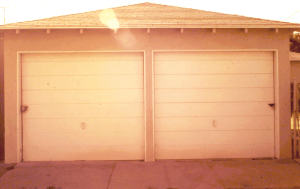
1980 – Julie and Hank’s first office was in a garage. “By the seat of our pants, without knowing what we were getting into, we started a practice.”
The creative potential of being an outsider
If you are an outsider, you can see things that people inside simply can’t see. A different perspective is a creative position.
In our earliest LA projects, we didn’t understand some of the constraints that came from local convention and would endlessly ask, “Well, why can’t we do it this way?” Problem solving benefited from outsider knowledge. What was conventional on the other side of the world looked like innovation here. And truthfully just ‘not knowing’ forced invention.
Hank had ways of getting around technical constraints and inventing strategies that allowed us to put ideas out there that people felt were fresh. While Hank was assembling, I was looking at how people perceived and used the space – the social dimension had been sidelined in architecture for some years and that interest generated non-standard solutions. I have an innate sense of empathy (middle child) and rely a lot on that instinct. That sounds really undisciplined, so I need to add that I think analysis and research are important. Nevertheless, we should not underrate intuition, which I think might be more accurately characterised as knowledge gained without realising we were learning rather than fluffy thinking.
Not belonging is part of an anti-authoritarian position that I guess I appropriated from my dad – who was, as the stories go, a bit of a larrikin. He was leery of any institutional setting – not just schools (which he left in the 8th grade) but also lawn bowling clubs (uniforms) and museums (special knowledge). That did not mean he had a disdain for education and critical thinking. We were very much a Jewish family and dinner table arguments were a daily staple. Hank’s family were Dutch immigrants and always making and doing. That pragmatism also underpins the work and culture of the practice.
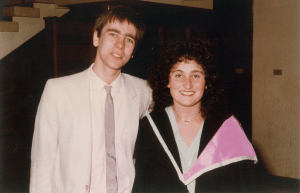
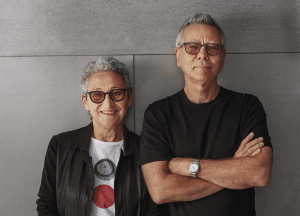
Neither of us came to architecture with any real knowledge about design and both of us were first-generation Australians. Being part of a minority ethnic community is something I understood well. I learned that the design community operated similarly – another bunch of outsiders linked by common interest. Membership comes with the benefits of belonging and the downside of unstated conventions that can be claustrophobic.
I am not an outsider in LA or the architectural community anymore, which is both a problem and not. Experience is great because it stops you from repeating the same mistake and things get done more quickly. But it’s also the biggest camouflage for habit, and I’m terrified of habit!
Partnerships
When we started, Hank could do more stuff than I could – still can. I supplemented income by teaching and I was good at articulating ideas. So, I was the one who put together presentations to communicate with others. Hank got things built in his super pragmatic wonderful way, I became the voice of the firm and we designed together as we had through school – both at the University of Melbourne and UCLA. Now there are four partners – me, Hank, Brian Lane (who’s been with us for about 20 years and is a great designer and conscience of the office) and Nathan Bishop (who was a student in a studio I taught at Harvard and signed on). He has expanded how the office thinks and our ability to innovate.
When I say ‘I’, as often as not, I mean ‘we’. The practice is not about one person’s vision or one person’s anything. I’ve ended up as the loudest voice outside of the office, but I’m talking about many people’s interests. A creative idea doesn’t come from a single person with a title. It is a confluence of thoughts that through interaction coalesce into a singular idea. [If you were seeing this, you’d see a lot of swirling hand movements]. And these days I see myself as a creative facilitator rather than a hands-on designer.
Architecture as a social medium
We are meant to be good people because we do a lot of public good projects, right? Well, I don’t see it that way. Social projects are as interesting as any others, and those clients or end users are just as important as anyone else. I don’t see why I should get a gold star for it – but I’m happy to take a gold star if you want to give me one! I do think we have changed some of the old assumptions about social projects and attracted other architects to see affordable housing and community places as valued places with opportunity for design to improve quality of life.
Our starting premise is that architecture is a social medium. This is a broader concept than architecture achieving social purpose. It’s our framework for directing attention to people and the social potential of our medium. It influences the way we organise a project and give it architectural expression. The core to design for us is getting a project to make connections – Nathan’s been calling these ‘sticky opportunities’ between a building program and a physical and social context.
Take the Children’s Museum. It was designed to support the Museum’s interest in the value of intergenerational exchange. The material palette and spatial quality avoided the usual kid-friendly tropes of scale and gratuitous bright colours, so a parent felt less like, “Oh, God, I’m hanging out in kids’ space and this is boring … Go and play for another ten minutes.” In other words, we were trying to have the architecture help break conditioned behaviours that discourage adults from interacting with their kids.
At 500 Broadway we’ve been trying to break down the barrier between the street and the housing above. We couldn’t compromise the line between secure space and street, but we did configure the massing, open space and apartments to connect, and used an active expression to reinforce the intent. At Pico Library, placing bikes at the entry mattered even if it was messy or maybe it is more accurate to say because it is messy. The fabric awning was also very considered – a device included to convey a sense of daily use and temporality as well as providing a subliminal link to the well-loved farmers market that happened on the library doorstep each week. Building on the potential of architecture as a social medium relies on layering cumulative strategies: a flow that strengthens connections between building and context, a configuration that not only provides opportunity for social interaction but also empowers users by offering choice, and a sense of discovery, and an expression that offers open-ended subliminal cues of welcome and care.
Secretly, I’ve always felt it necessary to design buildings where my dad would feel comfortable. He was pretty suspicious about art and architecture because he did not know as much as he would like about them, and didn’t want to be taken for a fool. I still tell myself, “All right, Julie. He might sit down here.” I don’t know how much I’m kidding myself that I have succeeded (he passed many years ago) but his anticipated reaction keeps me mindful.
But to be clear, making everyone feel welcome is not the same as advocating for the familiar so as to make things feel comforting. I think the public likes challenge and seeing things differently. Exploring new strategies and taking risks is not an arbitrary pursuit but a necessary one to keep us actively thinking.
Public and professional roles
Teaching, being on juries and giving lectures are roles I really enjoy. It has taken me to parts of the country and the world that I would never have gone to – like Starkville, Mississippi or the middle of Sri Lanka. I am a hungry observer. I am also curious about how places work, and the inside guides, often local faculty, allow you to learn a lot in a short time. Teaching has introduced me to people (students and colleagues) that have triggered new ways of thinking. It also demands preparation. The prep (for studio, lectures and writing) is really rewarding. The act of communicating effectively forces (at least for me) research and purposeful analysis. It turns out to be the place where I can reconcile principles and practice.
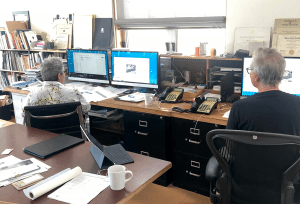
Ignoring the barriers
I have been extremely ignorant and extremely lucky. For the earliest part of my career, I just didn’t get it. My attitude was: “Why can’t I? There’s Blanche Merz. She’s a lecturer.” I also had great teachers in high school who were women, so I thought, “They’ve done stuff. What is there to stop me?” I never really understood that I couldn’t, so it never really worried me.
As I moved through my career I noticed that many others hit barriers – real barriers to advancement – that I did not see. My takeaway now is to know the barriers are there but act as if they are not.
I actually found difference could be leveraged to advantage. In my year out (after third year in the old days), I worked at the Public Works Department. I think I may have been the only woman in the place not in the typing pool. I asked my boss if I could I go on the building site (none of the interns went out on site). He went away and came back a few days later to say, “Yes, we’ll organise that”. It took quite a while, however. He explained that the problem was that they didn’t have toilets for women on the site. Finally, I get on site and the foreman lines up everybody (all men obviously) and says, “We have a woman on the site. There’ll be no more bloody swearing.” I was a novelty in the office and in the field and that gave me power. It did not give me common sense – it took me a while to learn that one asked for help resolving issues rather than pointing out mistakes, which meant someone (usually men) lost face.
I do suffer from imposter syndrome – you know, the fear that you will be found out and exposed as an idiot. I think women experience this anxiety more than men. I got to give the graduation address at Melbourne University the year I received an honorary doctorate, a point at which it is hard to rationalise feeling like a fake. I shared my story assuring everyone (including myself) that “no one had found me out so far, and no one would find them out either.”
Family, ‘success’ and flexible work
I think the hardest thing for women is raising a family while juggling a career, but it’s also difficult for men to manage. Everyone should be able to choose how they want to take on parenting, and not believe that there’s some righteous best path. We’ve also got to stop saying success is measured only by traditional business-school criteria. Women who focus on family (and women rather than men more often make this choice) and place career second are not less successful. It’s bullshit.
I hope that as women increase their influence in the power structure of architecture, the definition of success will be broadened to honour different modes of career engagement. In any event, until childcare is universal and affordable, choice will be obscured by need. That’s problematic for all of us.
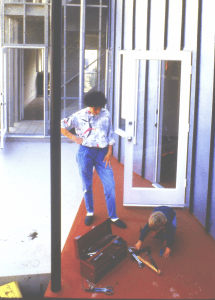
1988 – juggling demands on a Design Build project.

1990 – “We were early adopters of flexible schedules in the office to address family time”
I’m my own boss. I can come and go as I want. That makes it easier. When we were raising our family (remember my husband was my partner), we were financially comfortable enough to choose a childcare system that gave both Hank and me more freedom, but it was still not that easy. I always felt I was in the wrong place – at work when I should have been home and at home when I should have been at work.
We were early adopters of flexible schedules in the office to address family time. Everybody at work was watching us. It would have been hypocritical to not let others similarly exercise more control over their schedules. About 15 years ago we also instituted a nine-day fortnight – everybody has every other Friday off, which has proven a great success. In Australia there is more regulation on hours and more vacation time, and this discussion may seem trivial but here it counts! We notice staff really value their quality of life and the policy offers more opportunity for many to take that extra trip or do other things. Some parents, who’ve got kids in childcare, prefer to work regular hours and leave earlier each day, rather than have the day off. We have some people who start at 7.30am and go home at 3pm. We have others who work late through the night because that’s the way they want it. There has to be a fair amount of trust and it seems to work.
Advice to younger self
Architecture and life, taken as it comes, has delivered some great times and demanded great and satisfying effort with each turn. I have no advice – half the fun was learning and doing on the fly.

Julie Eizenberg, FAIA, RAIA is a Founding Principal of Koning Eizenberg, responsible for setting the design vision. She has given visibility to the design value and potential of community projects and people-oriented practice. Under her leadership, Koning Eizenberg has earned more than 160 design and sustainability awards and been widely published. The practice has been honoured as AIA California’s Firm of the Year, and she and founding partner Hank Koning were awarded the 2019 Australian Institute of Architects Gold Medal and the 2012 AIA Los Angeles Gold Medal in recognition of a lasting influence on the theory and practice of architecture. In 2016, Julie was awarded an Honorary Ph.D in Architecture from the University of Melbourne.
Julie teaches and lectures around the world. Monographs include Architecture isn’t just for special occasions (Eizenberg, 2006), which articulates the value of social engagement as a rich reserve for design; and Urban Hallucinations (Eizenberg, 2017), which examines how the idyll of local shapes neighbourhoods. Julie has been a frequent advisor to the US Mayor’s Institute on City Design, and is a Board Member for Public Architecture where she has raised awareness of opportunities for architects to get involved in social impact projects. She is also an active Board Member of the School of Architecture at Taliesin and Films by Youth Inside, which offers film making to incarcerated and disenfranchised youth.
Photos: Koning Eizenberg Architecture, Inc
Interview by Justine Clark. Compiled and edited by Susie Ashworth.






















